





How to Write a Sympathy Note
Use nice stationery. Casual notes can be written on whatever is handy. But the sympathy note requires something nicer. Death is the gravest of matters and your medium should reflect your respect for the weight of the situation.
Keep it short and simple. A lot of men can’t get started writing because they think they have to come up with something deep and philosophical about death, dying, and hope. While the bad news is that there’s nothing you can write to take away a person’s pain, the good news is that the grieving friend knows this just as well as you do. They’re not expecting something profound. They just want to know that you’re thinking of them and feeling for them.
Start off by expressing your sadness at hearing about the death. “I was so sorry to hear about the death of your father.”
Share a memory. There’s not much you can do to alleviate someone’s grief, but sharing a memory of the deceased person comes close. It gives the person a few moments to laugh and remember. And it warms their heart to know that others have special memories of their loved one that they carry with them. Share some of the special qualities and favorite memories about the deceased.
If you didn’t know the person your friend lost, then skip this step. If your friend lost a baby, tell them that you understand that even though your friend never got to meet their child, they’re grieving over the loss of the future they’ve been dreaming about with him or her.
Don’t try to explain the loss. If you’re a religious person, don’t offer platitudes like “This is God’s plan,” or “This is God’s will.” This might be something the person comes to believe in the future, but in the midst of their grief, the idea of God snatching their loved one from the earth is liable to piss them off. I knew a guy who lost his wife in a car accident, leaving him to raise his 5 young children alone. He said to me, “If I hear one more person say, ‘God needed her more in heaven,’ I’m going to knock them out.”
Don’t compare your loss with theirs. This is especially true if you haven’t experienced the exact same thing. If their child has died, don’t tell them how you know what they’re going through because your dog just expired last week. You’ll come off as callous and tick them off. If you have experienced a similar loss, a reference to your ability to truly sympathize is appropriate. But don’t go on and on about how you felt during that time; the focus should remain on the other person.
Show your solidarity. Let them know that you’re thinking and praying for them. If you or your friend or family member is not religious and a reference to prayer would not be appropriate, simply say, “My heart and thoughts go out to you during this difficult time.”
Close by offering your help. Let the person know that if there is anything you can do for them or if they ever want to talk or hang out, to please let you know.
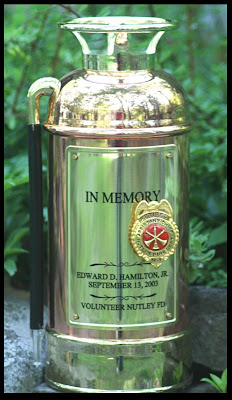

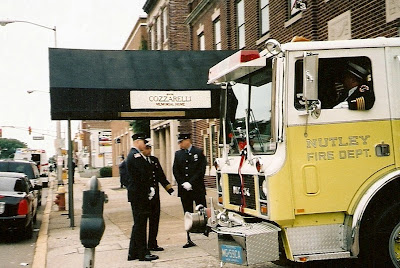


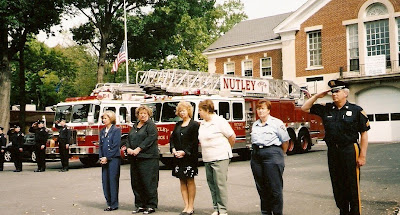


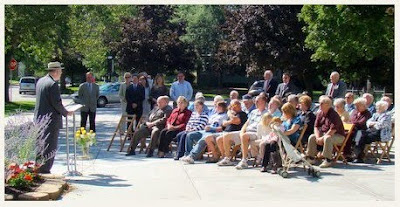


Following Pastor, I shared some memories of Larry and performed the dedication
Larry had a wonderful and humorous take on everything, and he referred to everything as a ‘doo-hinkus’. Larry had a sharp wit- he didn’t suffer foolishness, and you always knew how he felt about something, but it was always good natured, and he was willing to laugh at himself as well. One night, we were working a visitation, standing to the side and visiting, and Larry looked down towards the floor and started laughing. It seems that when he got up in the morning it must have still been dark, and he put on one brown shoe and one black one. He laughed about that for a long time and he even made a point to tell the family about it –which I know brightened up the evening for them.
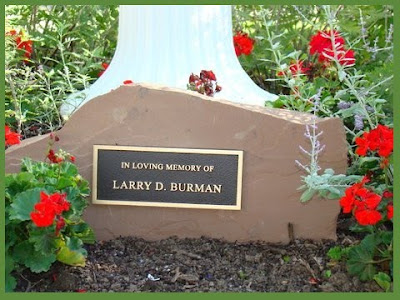
Larry's Plaque and Monument sit in a garden planter in the parking lot
Larry had a great love for his family. He was always talking about them, and you could tell that he cared deeply for them. Larry’s wife Pat, and their children and grandchildren are wonderful people just like Larry. When Larry died, I can only imagine what his family was going through, but when we got out to his house, I’m not sure if I was helping the family through things, or if they were helping me, because that’s the kind of gracious giving people they are. I know that Larry loved them very much.

Gathering in the funeral home to share memories after the dedication
Because Larry was so good at so many things, he was always in great demand for all sorts of projects at all of the Cress locations. So, it was natural that he took the lead when we needed a new parking lot. We took a lot of bids to resurface in asphalt, but Larry was smart enough to realize when D.W. Nelson Concrete of Stoughton gave us a great bid for doing it in concrete, that this was the best choice in terms of quality and cost effectiveness for the long term. On Larry’s recommendation, we went with Nelson’s bid, and I know that Larry would have been very pleased with the work they did for us.

Larry's wife Pat, stands with me at the close of the service
And so, we found it fitting to dedicate our parking lot in the loving memory of our friend Larry Burman. The plaque that now rests in the garden planter area of the lot, generously donated by Wisconsin Monument of Stoughton, will be a reminder to us of Larry’s wonderful spirit; cheering us up as we go out to services, reminding us as we come back in the afternoon why we do this work, warming us with his memory as we stand out parking cars on the cold winter days, and in a special way, we know that Larry will still be the first one here in the morning.



"My editor is having a heart attack over this picture! He says it's sacrilegious and disrespectful, and he will not run it under any circumstances. Could you please send us a different picture?"
October 14 update: Here is another article
about Skip by Doug Moe - "A toast to the man who kept a beer bottle in his back
pocket" http://host.madison.com/wsj/news/local/doug_moe/article_d0714760-b1f2-11de-bb1f-001cc4c03286.html



